Let’s embark on a delightful journey of discovery today! Can you unravel the enigma behind these relics from yesteryears? From curious contraptions to charming artifacts, these antiquated treasures are sure to pique your curiosity. But fret not, give it your best shot and let your imagination roam as you contemplate the functions of these intriguing objects.
Let the Guessing Game Begin: Can You Decipher the Secrets of These Antiquities?
Object #1: The Coin Collector
Behold this amalgamation of metals adorned with slots and connectors. Can you venture a guess at its purpose in days gone by?
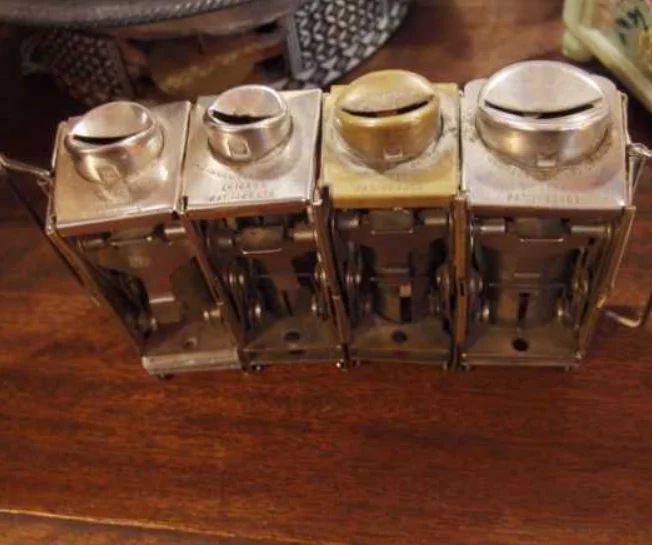
Indeed, if you surmised it to be a coin collector, you’re absolutely correct! Train and bus conductors of old utilized this device to collect fares. Coins were deposited into the slots, neatly stacking up at the bottom for retrieval. Ingeniously designed hooks allowed it to be affixed to their belts. Remarkably, a modernized version of this contraption still sees use in places where entry payment isn’t immediate. Isn’t that clever?
Let’s proceed to our next enigma!
Object #2: The Sand-Filled Swim Cap
Cast your eyes upon this captivating cap adorned with feminine prints, lined in azure, and equipped with chin straps. Can you fathom its intended use? Here’s a clue—it’s filled with sand!
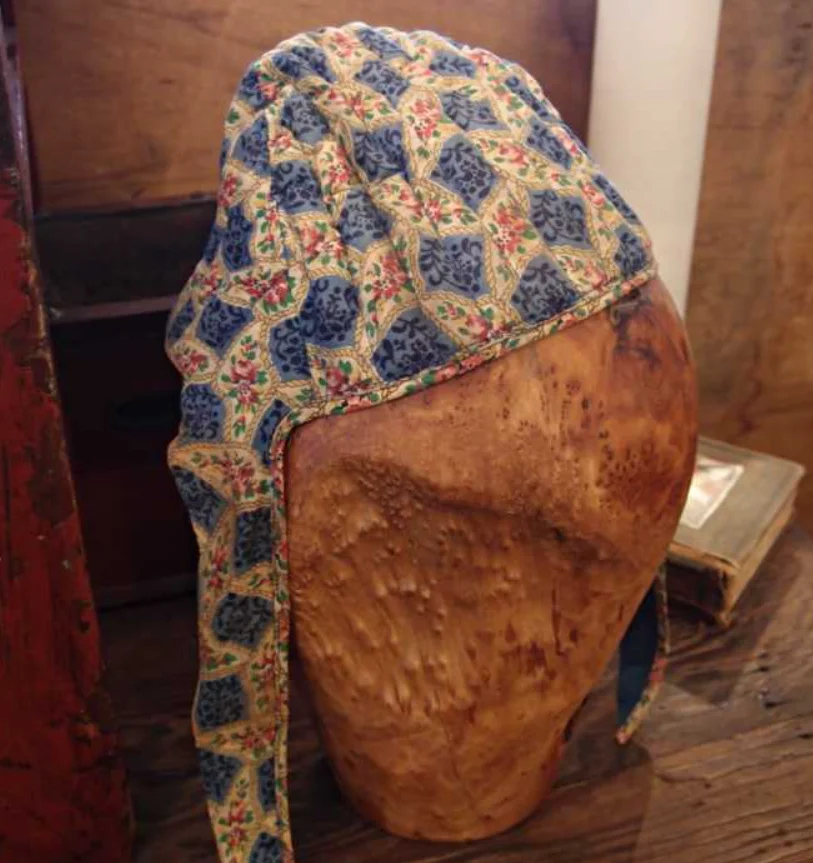
Surprisingly, this peculiar cap serves as an early rendition of a swim cap. During the 1920s, enthusiasts sought to emulate the popular aviatrix style, yet rubber materials were scarce. A creative solution emerged—channels were machine-sewn, and the cap was filled with sand. Why sand, you ask? It acted as a waterproof barrier, affording swimmers the luxury of selecting their preferred fabric designs rather than being confined to black or yellow rubber. Truly an inventive approach, wouldn’t you agree?
Let’s unravel the mystery of the next artifact!
Object #3: The Iron Flue Damper
Observe this iron marvel adorned with stamped patterns on both sides. Its iron plate swivels along a spiraled post. Any inklings as to its function?
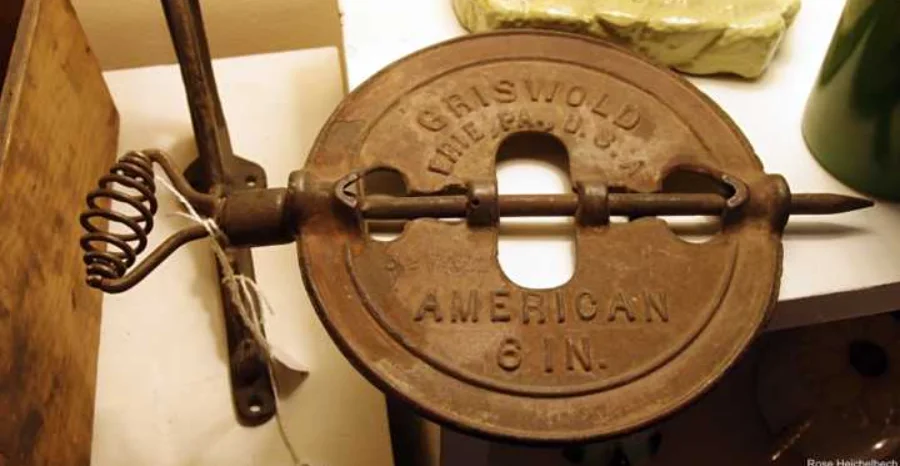
If you deduced it to be an iron flue damper, you’re absolutely correct! While these iron contraptions still see occasional use today, they’re a rare sight. Exploring antique treasures offers a glimpse into our rich history—it’s akin to a journey through time!
Let’s delve into the next riddle, shall we?
Object #4: The Victorian Shop Dispenser
Feast your eyes upon this elegant metal box embellished with intricate gold stenciling and a glass front. It boasts a small sliding door featuring a depiction of canines. What purpose might it have served?

This exquisite box, my friend, is none other than a Victorian shop dispenser. Crafted for the sale of goods in bulk, it came in various sizes. This particular specimen, with its labeled insert, was intended for dispensing gunpowder, though it could have easily housed sugar, candy, or other commodities. The glass front allowed patrons to inspect the quality of the goods they purchased. As for the depiction of hunting dogs, it’s merely a decorative flourish, as the box was designated solely for gunpowder storage. Quite a fascinating piece of history, wouldn’t you say?
Onward to the next enigmatic object!
Object #5: The Cedar Butter Churn
Behold this sizable wooden drum outfitted with a lid, handle, and footed base. A crank adorns its side. Care to venture a guess at its purpose?
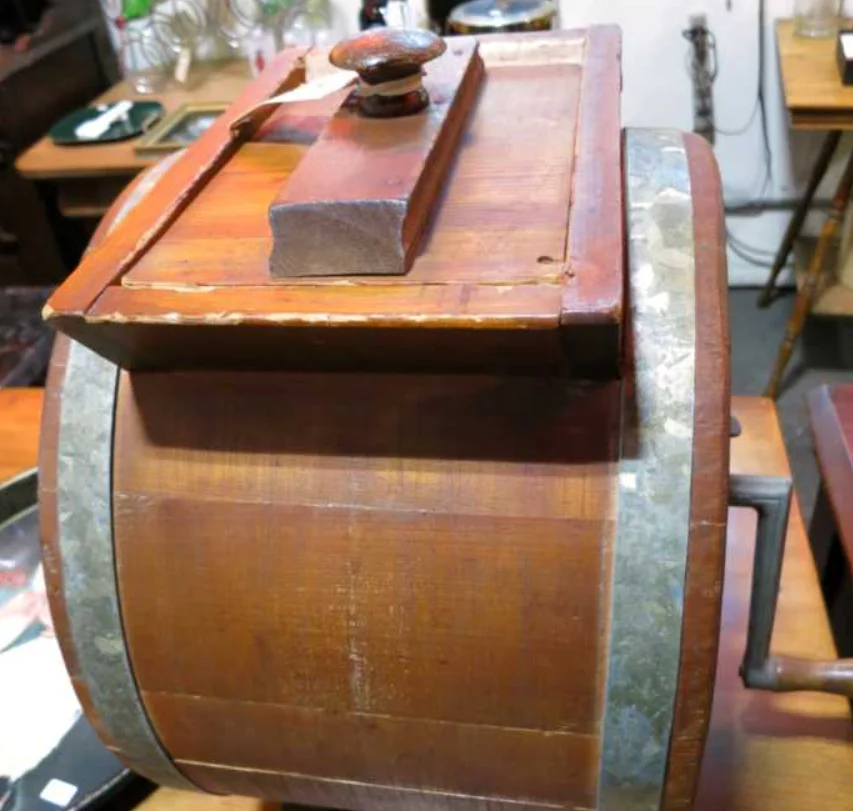
This wooden drum, my dear sleuth, is a cedar butter churn. Utilized for the production of larger quantities of butter, it bears the inscription “Farm Master Dairy Supplies” on its opposite side. We wouldn’t want to make it too easy for you! Discovering these antiquated tools offers a glimpse into a bygone era—a time when life seemed simpler.
And finally, the ultimate mystery!
Object #6: The Soda Bottle Stand
Take a moment to inspect this metal stand boasting three tiers, each featuring notched cutouts. It stands on three legs and measures approximately 4 feet in height. Can you discern its intended purpose?
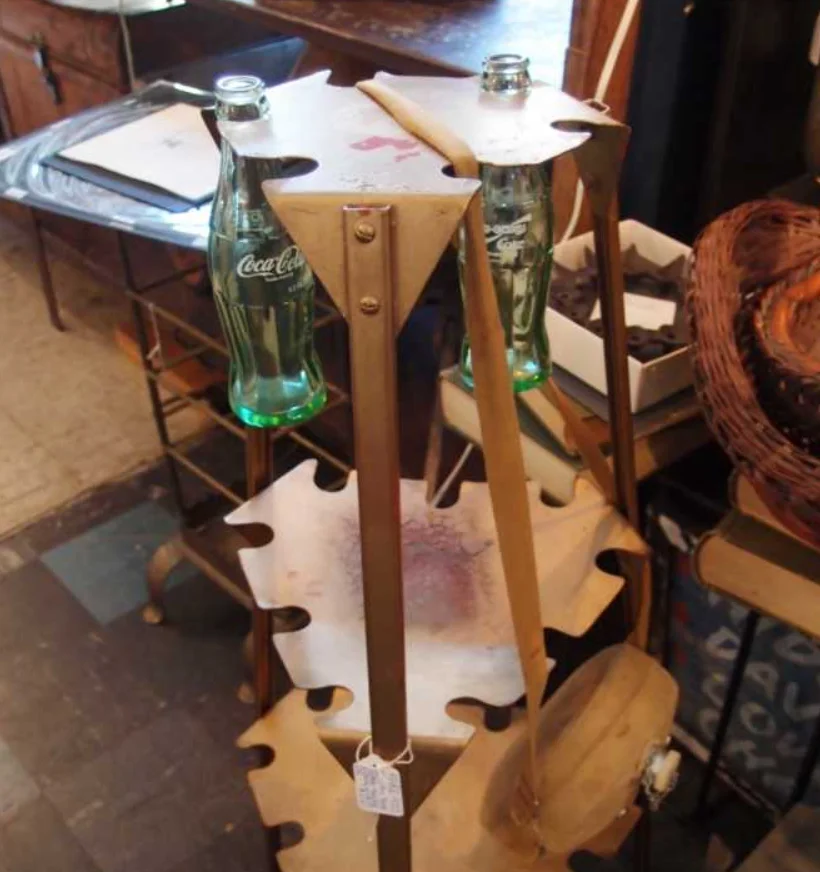
This stand, my astute observer, served as a display for soda bottles—specifically designed by Nehi for their soda bottles as part of their marketing endeavors. Its triangular shape and notched tiers were perfectly suited for cradling the bottles by their convenient necks. In the days of the Depression, these stands adorned corner shops and grocery stores, capturing the attention of passersby. Quite the spectacle, wouldn’t you agree?
And there you have it! These intriguing artifacts invite us to journey through time, showcasing the ingenuity and resourcefulness of past generations. So, how many mysteries did you successfully unravel?